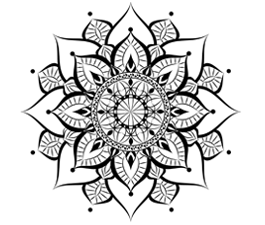HAM – SA or SO -HAM
Hamsa mantra is ajapa mantra which means it is done without sound – Ham and Sa (pronounced hum sah) are the natural sounds that your mind produces when you breathe in, and breathe out. There are different schools of thoughts as to when you are supposed to pronounce the sounds – I’d say try both and see what feels better for you. There are also different schools as to the meaning.
In Rigveda Hamsa is primarily a solar symbol, the bird of light. Hamsa is also the hawk or falcon that steals the Soma and takes it up from the Earth to enjoy it in the freedom of the highest Heaven. Hamsa also represents the union of Shiva and Shakti, Sun and Moon, Prana and Apana, the incoming and outgoing vital energies. The upward and downward energy, SA (up) HAM (down).
According to the Tantric Yoga practices and philosophy, Hamsa represents the Shiva principle just as the Kundalini indicates the Shakti principle. David Frawley says “Hamsa and Kundalini must unite and move together. It is the Kundalini that carries the Hamsa up the spine.”
Hamsa mantra originates from Upanishads and ancient teachings say this mantra is a vibration of infinite consciousness, uniting us each with divine source. It is associated with higher consciousness, or Lord Brahma.
In Advaita Vedanta (Hindu philosophy of non-duality) the swan is regarded as the perfect models of how humans on the spiritual path should live their lives – floating on the world of Maya (illusion), in other words living within the material world, without being affected by the illusion, keeping dry of the wetness of egotism and materialism.
Hamsa is associated with the image of the swan – hamsa is a swan, symbol of Prana. In yoga, we say nose is the swan and the nostrils are the wings of the swan. Hence this mantra is very much associated with pranayama (breath techniques/ lengthening of the breath). It is said that every day, through our breath we do Hamsa. Perhaps without realising it, and in the process we offer and gather divine energy.
How to do it:
Normally the sounds are produced one exhalation and so for that reason the mantra is done without sounding it out aloud (ajapa). Rather than pronouncing it, you can think of the prana moving in the body when chanting SA. But best is to just watch your breath as there is no “right” way for the breath to feel; just be aware of what it is.
To begin meditating, sit comfortably and quietly and close your eyes. Start by relaxing your muscles, first in your feet, calves, and thighs, and then by shrugging your shoulders and rolling your head and neck around. Then for the first minute sit quietly with your eyes closed and do nothing. Notice if the breath is fast, slow, shallow or deep.
Start chanting your mantra in the slow effortless way. The unpronounced sounds of the mantra will help you focus your mind on to the breath. If you notice you mind wondering, gently bring your attention to the easy, natural rhythm of your breathing.
Watching your breath without controlling it is best done with focus. Your attention is what matters.
Slowly repeat thinking your mantra in that same simple, effortless way for 15-30 minutes.
After 15-30 minutes, sit quietly again and journal or get your thoughts on paper. Or just do nothing for few minutes.
#yoga #chakras #crownchakra #chakrayoga #meditation #mantra #hamsa #japamantra #pranayama
For malas to help with the meditation, please visit our shop
#hamsa
#meditation
#yoga



Leave A Comment